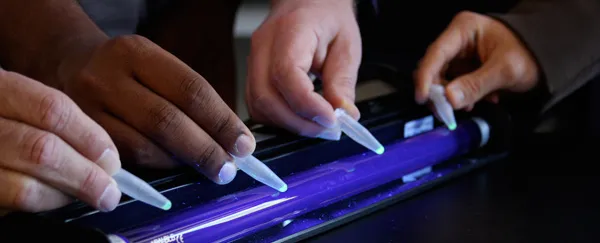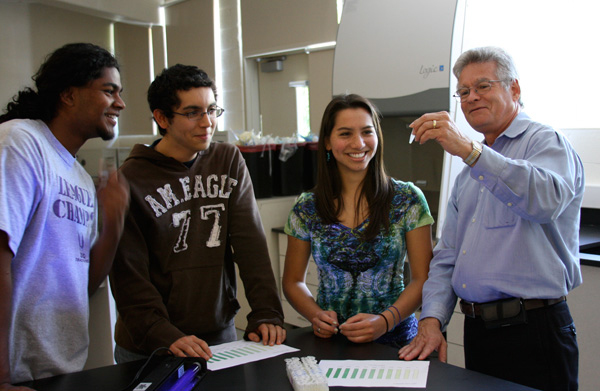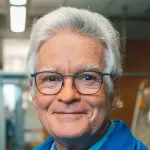
Stanford Report, June 10th, 2010 - by Jess McNally
Sequoia High School students are the first to reproduce a cutting-edge technique for creating glowing jellyfish proteins outside of a living organism, thanks to a Stanford chemical engineering professor and his graduate student.
After months of preparation and refinement of the experiment, Jim Swartz and Cem Albayrak, a graduate student in Swartz's lab, went to the four biotechnology classes at Sequoia High School in Redwood City, Calif., six hours a week, three weeks in a row, to teach and run the experiment with the students.
The high school students are the first outside of Stanford to reproduce a technique for creating glowing proteins – first discovered in jellyfish – outside of a living cell.
The students also came to the Stanford campus for a tour of Swartz's lab and a lecture in the Mudd Chemistry Building. Many of the students had never been on campus, and cited this part of the experience as a highlight. "It was fascinating to see a real setting of a college lecture," said Nicole Snider, one of the students in the class.
The goal of the students' experiment was to create green fluorescent protein (GFP) outside of a living organism. GFP glows under fluorescent light and can be used to "mark" proteins in living organisms. It was discovered in jellyfish in the 1960s and first added to other cells in the early 1990s – work that earned the 2008 Nobel Prize in chemistry.
Normally, GFP is made inside living cells, which poses challenges to researchers because the cell walls act as a barrier to many molecules. Swartz developed a technique to harvest the insides of cells by ripping the cell walls apart (which he does by pushing the cells through a tiny hole under enormous pressure). By putting the insides in a test tube, he can still activate protein synthesis. "It's like having this gigantic cell; the whole reactor is one large cell without any walls," Swartz said. He added that the technique is likely to be used to construct new vaccines. Swartz and Albayrak harvested the cell interiors for the high school students to do their experiment.
Sequoia teacher K. C. Jones, who developed and taught the biotechnology class, said he was skeptical when Swartz contacted him with the idea to teach the brand-new experiment. "It is very rare for something to work the first time you try it out with a hundred high school students," Jones said. "But it worked amazingly well."
The students were able to watch their test tubes become more and more fluorescent green. "There was this immediate satisfaction from actually seeing the change," said Snider.
The students used color charts created by Albayrak to measure how much protein had been created over time, based on the intensity of the color.
Swartz was inspired to work with Sequoia High School because of his high school chemistry teacher, whom he credits for launching his career in chemical engineering. While in high school, Swartz's teacher nominated him for a National Science Foundation (NSF) summer program without his knowledge.
"I grew up on a farm in South Dakota, and when I was accepted, he talked my parents into letting me go, because it meant losing a hand on the farm," Swartz said.
Roberto Pablo Pimienta, a sophomore in the biotechnology class, moved from Mexico last year to pursue science after taking chemistry his freshman year. For him, a highlight of the project was hearing the personal stories of Swartz and Albayrak. "It was really influential that both of them had such humble beginnings," he said.
Albayrak, who Swartz credits with spending the equivalent of several weeks preparing the experiment, grew up in Turkey.
Pimienta will be working in a Stanford laboratory this summer as part of the university's Rising Interest in Science and Engineering (RISE) program, where he'll be using techniques he's learned in the biotechnology class. Jones nominated him for the program. "I came here looking for this opportunity," Pimienta said.
Based on the success of this year's project, Swartz is keen to work with Sequoia again next year. However, "one unknown is that K. C. is leaving Sequoia; the other unknown is that I don’t know if I'll find another graduate student to volunteer to do this," said Swartz.
Swartz and Albayrak have plans to write up the procedure for an academic journal, and to work with Jones to write a publication for an educational journal that describes the experiment and the experience.

